Indian Mythology

About Indian Mythology
Indian Mythology is not only old (1200 B.C), but also vast. The hymns of the Rig Veda are considered the oldest mythological heritage. At this time man had faith in everything around him and godliness was attached to every wonder he saw or experienced. Thus was formed the triad of the early Vedic Gods - Agni, Vayu and Surya. The Vedic Gods were mere abstractions, intangible and illusive but in the post-Vedic phase or in the Puranas the gods assumed substantial shape and individual character.
The two Itihasa or epics Ramayana and the Mahabharata were compiled in the late Vedic period. The heroes of the Vedic age gradually dislodged the shadowy gods and found their place in the Puranas. The Puranic Gods who had their seeds and roots in the Vedas gave rise to the concept of Trimurti. Thus emerged the transition of Hindu mythology from Vedic Gods (the Cosmic Trinity: Agni, Vayu and Surya) to Puranic Gods (the Hindu Trinity: Brahma - Vishnu - Mahesha).
Om or Aum symbolizes the essence of Hinduism. It means oneness with the Supreme, the merging of the physical being with the spiritual. The most sacred syllable, the first sound of the Almighty - the sound from which emerges each and every other sound, whether of music or of language.In the Upanishads this sacred syllable appears as a mystic sound, regarded by scriptures as the very basis of every other sacred mantra (hymn). It is the sound not only of origination but also of dissolution. The past, present and future are all included in this one sound and all that transcends this configuration of time is also implied in Om.
The Indian pantheon consists of 33 Crore Gods. Although these gods are not individually worshipped expect for some, they have a special place in the Hindu mythology and are often seen in temples or in paintings or pictures beside the main three triads and their various manifestations. Here are some of the significant ones:
- HANUMAN - the monkey god - devotee of LORD Rama
- INDRA - King of the abode of gods
- YAMA - the god of death
- GAYATRI - personification of the Vedic hymn
- GANGA - personification of the holy river
- KAMADEVA - god of love
- KUBERA - god of wealth
- NARADA - the wandering seer who features in almost all the Puranas
- VARUNA - the god of oceans
- SOMA - the moon god
- VISHWAKARMA - the divine architect of the universe
Other than these lesser gods there are a host of celestial beings. These are often mentioned in the various Vedas and Puranas and are much a part of the Hindu mythology as the lesser gods. Celestial beings:
APSARAS: These are beautiful ladies, who dance in the court of Indra. Indra also uses them to lure the saints and sages who by their severe penance endanger his superiority as the ruler of Swarga (Paradise of Indra). In the Vedas they were personification of vapor and in the Puranas the ballet girls in Swarga. RAMBHA, URVASI and MENAKA are the most celebrated of them.
GANDHARVAS: Gandharvas are the celestial musicians who play in the court of Indra and also when some divine act of the gods had been completed in the interest of humanity. They are said to have a great partiality for women and are said to be exceptionally handsome.
KINNARAS: are mythical beings, with a body of a man and head of a horse. They are singers at the court of Indra. They are also sometimes said to be the minstrels of Kubera's palace at Mount Kailasa, which is also the abode of Shiva.
SIDDHAS: are classes of spirits of great purity and holiness, who dwell apart in the sky or mid-air between earth and heaven.
YAKSHA: They are the guardians of wealth and attendants of Kubera, employed to guard his gardens and treasure. They live in ALKA-PURI (yaksha-puri). The female of Yaksha is known as YAKSHINI.
Animals have a special place in Hindu mythology. One comes across various animals in Hindu mythology some, which have been personified and given a form as the centuries passed. These animals have been symbolic as the vehicles and carrier of various gods or one, which have helped the gods in various times. Some of them appear as independent divine creatures and are worshipped in various ways.
The various animals in Hindu Mythology:
- AIRAVATA - the elephant - vehicle of Indra
- AKUPARA - the tortoise - on which Earth or Prithvi rests
- ANTELOPE - vehicle of Vayu and Chandra
- ARVA - mythical being half horse and half bird - one of the horses of the moon
- BUFFALO - vehicle of Yama
- CERBURA - the three headed infernal dog of the Krishna legend
- CROW - vehicle of Shani
- DOG and HORSE - vehicle of Shiva as Bhairava
- GARUDA - the king of birds - half man and half eagle or vulture, vehicle of Vishnu
- JAMBAVANT - the king of bears - ally of Rama
- KAMADHENU - the cow of plenty
- MAKARA or JALAMPA - the mythical sea monster - vehicle of Varuna (god of water)
- MOUSE - vehicle of Ganesha
- NANDI - the bull - vehicle of Shiva and Parvati
- PARAVANI - the peacock - vehicle of Kartikeya
- PARROT - vehicle of Kamadeva
- RAM - the he-goat - vehicle of Agni
- SARAMA - dog of Indra
- SHESHNAG or ANANTA - the infinite - the king of Nagas, vehicle of Vishnu or the bed on which Vishnu rests
- SWAN - vehicle of Saraswati and Brahma
- TARKSHYA - winged horse personifying the sun
- TIGER and LION - vehicle of Parvati as Kali and Durga
- UCHCHAIH-SRAVAS - the eight headed king of horses produced during the churning of oceans
In Hindu religion and mythology, the nine planets occupy an important role. The planet deities are referred to as the NAVAGRAHA and are supposed to have a significant impact on the lives of individuals. Hindus worship these planets as deities, so that they may bring peace and harmony and avert any mishap.
Of the Navagraha the first seven Sun, Moon, Mars, Mercury, Jupiter, Venus, Saturn, lend their names to the days of the week: Sunday to Saturday respectively. The other two Rahu (Ascending node) and Ketu (Descending node) are also fabled as planets, the former as a planet with a head and no body and the latter as a planet with a body and no head. The Navagraha are propitiated because of their sinister effects (Saturn, Rahu and Ketu) and for their favorable influences (Jupiter, Venus, Mercury, Mars, the sun and the moon). In addition to the nine planets, twenty seven Nakshatra (constellations) through which the moon passes and twelve signs of zodiac of the sun, regarded as deities, are consulted at births, marriages and on al occasions of family rejoicing, distress or calamity. Shanti (Peace) propitiation ceremony is held to appease any unfavorable constellations.


















 Translate
Translate